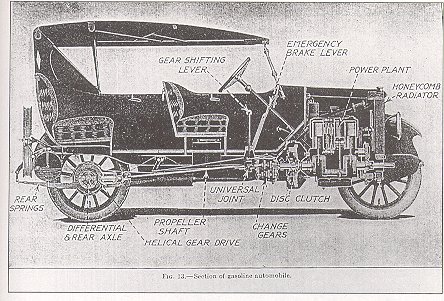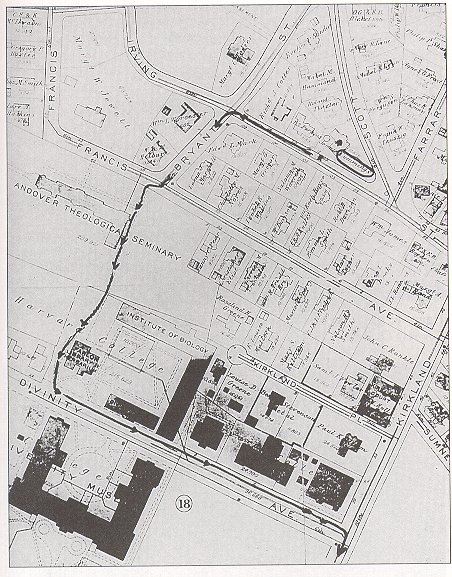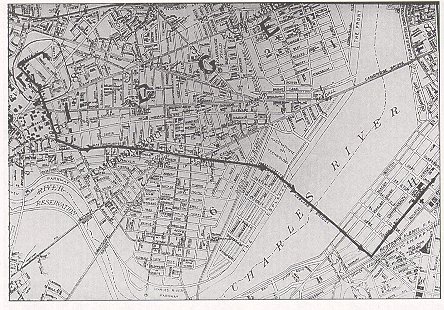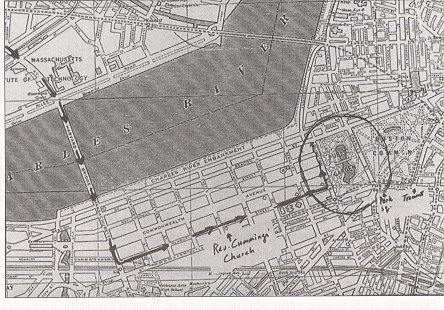
Figure 3. Section of gasoline automobile

Figure 4. Jeffrey propeller shaft and universal joints
[Spring 6 (1997): 55-69]
-new;and you
know consequently a
little stiff i was
careful of her and(having
thoroughly oiled the universal
joint tested my gas felt of
her radiator made sure her springs were O.
K.)i went right to it flooded-the-carburetor cranked her
up,slipped the
clutch(and then somehow got into reverse she
kicked what
the hell)next
minute i was back in neutral tried and
again slo-wly;bare,ly nudg. ing(my
lev-er Right-
oh and her gears being in
A 1 shape passed
from low through
second-in-to-high like
greasedlightning)just as we turned the corner of Divinity
avenue i touched the accelerator and give
her the juice,good
(it
was the first ride and believe i we was
happy to see how nice she acted right up to
the last minute coming back down by the Public
Gardens i slammed on
the
[end page 55]
internalexpanding
&
externalcontracting
brakes Bothatonce and
brought allofher tremB
-ling
to a:dead.
stand-
;Still)
(Complete 246)
Let us keep in mind that the mass production of the so-called "closed car" or sedan (as distinct from the "open car") at the start of the third decade of this century served to intensify the puritanic stirrings of a middle class already outraged by the numerous opportunities for clandestine debauchery—sexual and alcoholic—provided by the open car. Looking back at a previous decade, F. Scott Fitzgerald, in 1931, captured the spirit of what might appropriately be called the auto/sex revolution: "As far back as 1915," Fitzgerald mused, "the unchaperoned young people of the smaller cities had discovered the mobile privacy of that automobile given to young Bill at sixteen to make him ‘self-reliant.’ At first, petting was a desperate adventure even under such favorable conditions, but presently confidences were exchanged and the old commandment broke down. . . . Only in 1920 did the veil finally fall—the Jazz Age was in flower" (12–13).
Fitzgerald had, as we know, recognized the centrality to the American consciousness of the automobile by featuring its beauty, pulsing sexuality, [end page 56] and destructive power in the lives and minds of his characters throughout The Great Gatsby. Cummings, no doubt, wrote his "she being Brand / -new" out of a similar ethos, one in which automobiles and sexual prowess were frequently and variously conjoined for purposes of entertainment and of selling cars. (Popular songs of the era included: "Tumble in a Rumble Seat," "Six Cylinder Love," "When He Wanted to Love Her, He’d Pull up the Cover.") More than Fitzgerald, Cummings worked to blur the highbrow–lowbrow distinctions generated in America by a turn-of-the-century impulse toward what Lawrence Levine has characterized as a quest for "cultural authority" (228). Indeed, Cummings seems to challenge—in one form or another—that hierarchical impulse throughout most of his poetry. And he often does so (as in "she being Brand / -new") by mocking the common language and libertine attitudes displayed by a blustering, masculine persona, while at the same time shocking his highbrow readers through the vulgar persistence of a lowbrow voice that intimately addresses them as equals: "and you / know . . ." (Complete 246, lines 2–3).
Cummings’ idiosyncratic use of upper- and lowercase, along with the hovering typography of the opening line, "she being Brand," boldly announces the commercial, brand-driven awareness of his persona who is, no doubt, familiar with an array of contemporary automobile advertising claims with their iterated announcements not only of new brands but of engines, bodies, and prices that are "brand new." (One automobile historian speculates that there were over 2,000 brands of cars produced and advertised between 1907 and 1925 [Karolevitz 91]). Similarly, the persona’s extended conceit, which imbues his brand-new automobile with a female life of its own, and which links male sexual prowess with the freedom, mastery, and power associated with driving a car, derives in large part from a plethora of early ’20s advertising images, headlines, and copy.
The following advertising images from the early ’20s are selected almost at random from hundreds of examples. First, "A Golden Girl from Somewhere" (Figure 1). This is one of Ned Jordan’s numerous playboy ads that, through their beautiful images of active, wholesome women, and through the very name of his car, insistently flirt with the promise of male (and female) sexual adventure, promiscuity, and pleasure. Just as important and exemplary is the provocative advertising campaign for the Fisher Body Corporation that again and again, from 1915 to the Depression (through the artwork of Barclay McClennan), explicitly featured beautiful bodies, not of automobiles, but of curvaceous, opulent women (Figure 2). [Ed. note: These have not scanned well, and are not included here. thet are on pp. 58 and 59.]
The glut of copy usually accompanying such images and headlines served to articulate and reinforce a consumer fetishism that equated automobile ownership and driving with human companionship and sexual excitement. I offer a brief, composite sampling drawn from several ads: [end page 57] "striking beauty . . . it thrills you with its gratifying style [that word "gratifying" shows up in hundreds of ads] . . . crowds your pulses with the urge of power . . . sedan beauty that reflects a woman’s personality . . . satisfies your need for a reliable companion . . . trim, alert, resourceful, spirited . . . just itching to take you there and back in a jiffy . . . simply by a pull or a push, the lever finds the right notch . . . step on the throttle of that masculine car . . . a sassy pony, a cross between greased lightning and the place where it hits . . . touch the starter and feel the instant response."
Such displacement, in which human relations, feelings, activities, and
values are attributed to commodities (that is, cars), emerges as a major
object of satire in "she being Brand / -new." By recycling and rehabilitating
the threadbare innuendoes and clichés of commercialese, Cummings
fashions an extended metaphor whose sinuous mischief ridicules the pervasive
tendencies of his culture to "mix passion with gasoline" (Lewis 125). And
we might note, in passing, the sexual vibrancy Cummings’ speaker confers
on words culled directly from contemporary advertisements (as noted earlier):
"lever," "greased lightning," "touched."

Figure 3. Section of gasoline automobile |
Yet the wit and shape of Cummings’ metaphoric rendering cannot be fully
appreciated without an awareness of the many self-help, hands-on procedures
that routinely attended the driving and maintenance of automobiles in the
early part of this century. The universal joint, for example, required
oiling prior to any journey, and the driver of Cummings’ auto, rather than
relying on Jiffy Lube, was accustomed to removing the front-seat floorboard
to gain ready, lubricating access (Figure 3). The intimate, tactile nature
of this process is an important facet of both the tenor and the vehicle
(pun intended) of Cummings’ metaphor, as is the highly suggestive sexual
language and appearance (Figure 4) of what was called the "coupling" of
the "shaft" with the "joint," a term, by the way, that was Renaissance
slang for the female pudendum.

Figure 4. Jeffrey propeller shaft and universal joints |
Regarding the speaker’s assertion that he ". . . tested my gas felt of / her radiator made sure her springs were O. / K. . . ." (lines 7–9), we should also be aware that a reader in the mid-’20s would have recognized the touchy-feely necessity of this prologue to starting an engine—for there was no gas gauge, no radiator "meter" (although this soon became an add-on option), and no assurance that the springs were properly greased or in working condition (even a "brand-new" car might have broken a spring leaf on a short journey over bumpy or rutted roads). And because such a car had no fuel pump, a driver had to manually open the shut-off valve (or "pet cock," as it was called) to let gas into the carburetor before cranking her up by hand.
I have been relying for my visual illustrations and for many of my automotive operating observations on a popular driving manual, Hobbs’ 1915 and Hobbs and Eliot’s 1924 editions of The Gasoline Automobile. [end page 60] Yet without the help of this early compendium of automotive information, readers of "she being Brand / -new" should be ready to recognize the speaker’s laughable ineptitude as a driver of motor cars and, in turn, as a seducer of virgins. While he professes to be experienced and worldly (through his cocky tone and his quick, easy dismissal of his own clumsiness: "what / the hell" [lines 12–13]), Cummings’ speaker demonstrates that for all his "careful" preparations (or foreplay), the consequences of his having gone "right to it" (line 9) lead to a rapid series of major driving (and sexual) blunders. Not only does he flood the carburetor (we’ve all done that), but he also slips the clutch ("It is not desirable to slip the clutch any more than necessary," admonishes our solicitous driver’s manual, "as this means excessive wear on the clutch parts" [393]). [end page 61]

Figure 5. Movements of gear shift lever
Worse, and even more revealing of this driver’s incompetence and carelessness, is the fact that he "somehow got into reverse," an admission whose "somehow" does not deflect (as he wishes) the speaker’s responsibility for a novice’s mistake. Hobbs’ handbook underscores this point by observing that the "mechanical act of shifting gears is very simple, but the knack of learning to perform the operation rightly takes practice" (232). And the accompanying diagram and illustration confirm these conclusions (Figures 5 and 6), while Hobbs’ cautionary assessment serves as an appropriate gloss on Cummings’ cavalier persona: "Starting with a jerk or passing unevenly from one speed to another, strains the motor, racks the frame, and causes various troubles in the driving mechanism" (232). Are we not led to conclude, then, that it is not only the "she" of this poem who is "Brand / -new"?

Figure 6. Shifting gears
On trying again, our putative playboy manages, if we can rely on his account, to drive his auto and to spark sexual excitement quite successfully—though ungrammatically—in turning "the corner of Divinity / avenue" (lines 21–22), as he "touched the accelerator and give / her the juice, good" (lines 22–23). This striking rendition of human contact and response (namely, fingering the clitoris and stimulating vaginal secretions) exhibits neatly the precision of Cummings’ metaphoric vehicle (the reference to the accelerator is not to the foot pedal but to the button-tipped hand throttle), while at the same time the procedure described in lines 22–23 undercuts the speaker’s worldly, chauvinistic posturings. For, as Hobbs’ handbook once again confirms, Cummings’ driver is a novice who, in this instance, follows the conventional advice offered to beginners by the automotive manuals: [end page 62] "In learning to drive a car, it is better to use the hand throttle for the first few days until the other details of driving have been mastered . . . Then learn the use of the foot accelerator" (490).
Cummings’ speaker, however, rarely follows such advice, and his slamming application of the two-wheel braking system "Bothatonce" (line 33), bespeaks a recklessness and violence that defies our auto manual’s most exhortatory strictures against "jamming" the brakes down hard or using both the emergency ["internal expanding"—as it was called] and foot brakes ["external contracting"] "at the same time" (483). On the other hand, Cummings’ resonant sexual pun (". . . i slammed on / the / internalexpanding / & / externalcontracting / brakes Bothatonce . . ." [lines 30–33]) provides as graphic and clinically incisive a description of simultaneous orgasm as one will find in any sex manual; and we might conclude that at this heightened moment in the poem, tenor and vehicle rub artfully against one another to generate an ambivalent perspective on the speaker and his abilities: as a lovemaker he appears to have fully satisfied himself and his [end page 63] partner; as a driver he has come to a herky-jerky, jolting, mechanism-straining dead standstill. Or perhaps Cummings is here (uncharacteristically, I would add) anticipating the likes of Andrea Dworkin who believe that all sexual intercourse is basically an act of violence and rape. Whatever conclusions we may draw from the final, "tremB / -ling" (lines 34–35) moments of this poem’s sexual and automotive venture, we need to consider yet another level of meaning generated by Cummings’ puckish recontextualizing of a pervasive Elizabethan conceit.
Let me call attention briefly to the multitude of puns (note also the sexual ideograms "O," of line 8, and the "B" of line 34) that deepen this poem’s wit and playfulness by engaging the underside of English Renaissance literature. The verb "come" is obvious enough (line 27); less obvious are Elizabethan references to sexual physiology, anatomy, and performance in "oil," "it," "nudge," "gear," "juice," "ride," "nice," and, finally, "gardens"—a favorite of Spenser and, less mythically, of Shakespeare whose sonnet 16’s "maiden gardens," for example, alludes quite blatantly to virgin pudenda. Cummings’ gardens are no less allusive, but on the surface they refer, of course, to the Boston Public Gardens or Garden, where I want to linger for a few moments in suggesting that, along with Divinity Avenue (cf. "you’re divine!said he" [Complete 399]), the Gardens root this poem’s physical and symbolic actions tangibly within the geographical and, I think, biographical nexus of the poet’s college days.
Richard Kennedy informs us that Cummings’ days at Harvard were marked
by a "full rebellion against his father" and against the puritanic attitudes
his father so faithfully practiced and preached at home and at his South
Congregational Church on Boston’s Newbury Street (74). As Kennedy puts
it, Cummings continued [while at Harvard 1911–1916] to "seek out forbidden
pleasures . . . and to reach out for sexual titillations which his parents
would have regarded as dangerous and vulgar" (90). In the young poet’s
final months at Harvard, Kennedy suggests, Cummings found his new freedom
from family restraints by extending his sexual adventures to the "livelier
Boston precincts" (90). And I would suggest that the poem we are considering
is an artistic definition and embodiment of just such rebellion, freedom,
and titillation.

Figure 7. The ride begins at 104 Irving Street in Cambridge |
Let us chart significant portions of the "ride" Cummings’ speaker reports to us. Let us assume that the speaker begins at 104 Irving Street, the Cummings’ family home in Cambridge (Figure 7), proceeds along Bryant Street onto Divinity Avenue, and then turns the corner. Let us consider that the poem’s vehicle and tenor, sex on wheels, is therefore driven flagrante delicto, in full view of Harvard’s Andover Theological Seminary (where the Reverend Cummings had taken his degree), past Divinity Hall, and past the New Church Theologia at Divinity and Kirkland. Then let’s follow the [end page 64] vehicle to, say, Massachusetts Avenue (Figure 8), across the Charles on the Harvard Bridge, and then up Newbury Street toward the Public Garden (Figure 9). This route would take us up one of Boston’s most fashionable streets and past the reverend Edward Cummings’ church, noted on the map at Exeter and Newbury. What I’m suggesting is that the poem, as it conveys us on a journey from Divinity Avenue in Cambridge to the Boston Public [end page 65] Garden, acquires a Whitmanesque immediacy of transport that taunts the New England inhibitions of Cummings’ family and of the denizens who live and worship along the way. Blending surface and symbol, the poem carries its readers with mischievous intent "coming back down by" (line 27) what was, during the first decades of this century, Boston’s most pastoral, tranquil, and elegant park—here displayed (Figures 10 and 11) in samples from Maurice Prendergast’s turn-of-the-century Large Boston Public Garden Sketchbook. [end page 67] [Ed. note: Click here to view an image from the sketchbook. Not the same as those that appeared on pp. 67 and 68 of Spring 6.] |

Figure 8. The ride continues over Harvard Bridge |

Figure 9. Down Newbury Street to Boston's Public Garden [end page 66] |
The street name on the trolley car in Prendergast’s watercolor (Figure
11) reminds us that within a few blocks of the Public Garden, north and
east of the brick townhouses that lined Arlington and Beacon, lay the red-light
districts of Park Square and Tremont Street where Kennedy reports that
young Estlin picked up girls and flirted with the forbidden pleasures of
love for sale. Indeed, such information leads us, I think, to recognize
the rich, bristling animus of a poem that thumbs its nose at the complacency,
gentility, and wealth flaunted by those who frequent the fountains and
flower-lined promenades of the Public Garden. For the very name of this
small park (note Cummings’ idiosyncratic but purposeful pluralization)
emerges as a daring, unsettling double entendre that conflates the propriety
and opulence of Boston’s finest with the squalor and degradation of the
nearby prostitutes who are memorialized here by the bawdy, Elizabethan
spin given to "Public (as opposed to "maiden") Gardens"—a perfect setting,
geographic and symbolic, for what can only be called the climax of this
seminal Cummings poem.
Works Cited
[end page 69]
- Cummings, E. E. Complete Poems 1904–1962. George J. Firmage, ed. New York: Liveright, 1994.
- Fitzgerald, F. Scott. "Echoes of the Jazz Age," The Bodley Head Scott Fitzgerald, volume 2. London: 1959.
- Hobbs, George W. and Elliott, Ben G. The Gasoline Automobile. New York: McGraw Hill, 1924.
- Karolevitz, Robert F. Old-Time Autos in the Ads. Yangston, SD: Homestead Publishers, 1973.
- Kennedy, Richard S. Dreams in the Mirror: A Biography of E. E. Cummings. New York: Liveright, 1980.
- Levine, Lawrence. Highbrow/Lowbrow: The Emergence of Cultural Hierarchy in America. Cambridge: Harvard University Press, 1988.
- Lewis, David L. "Sex and the Automobile: From Rumble Seats to Rockin’ Vans," The Automobile and American Culture, David L. Lewis and Laurence Goldstein, eds. Ann Arbor: The University of Michigan Press, 1983.
- Prendergast, Maurice. Large Boston Public Garden Sketchbook. New York: Braziller, 1987.
Back to:
People, Places, and Publications pageSpring Contents Index